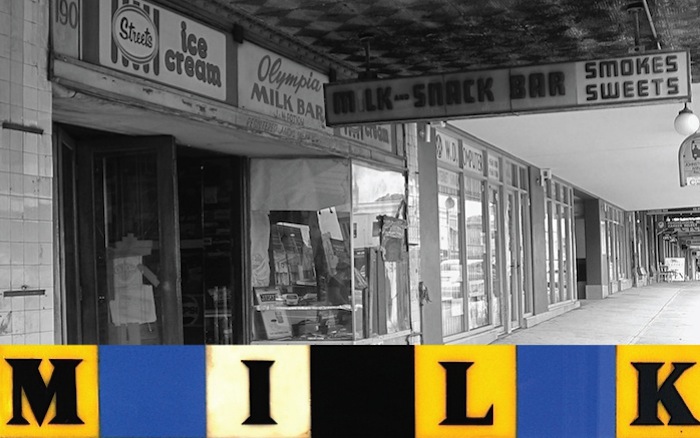
According to Macquarie University researchers, documentary photographer Effy Alexakis and historian Leonard Janiszewski, Australia’s Greek milk bars transformed the humble milkshake into a national drink.
The pair have suggested that 5 years after Mick Adam’s (Joachim Tavlarides) creation of the “milk bar” in Sydney in November 1932, some 4,000 milk bars were operating in Australia (most were Greek-run), and that by the 1950s, milkshakes were confidently challenging tea as the most commercially popular light beverage of choice.
Alexakis and Janiszewski point out that commercial Greek involvement with milkshakes commenced in the United States during the late 19th century – particularly in the southern states.
In Australia, milkshakes were being sold in pubs and emporiums just as Greek chain migration was increasing to the Antipodes in the 1890s. Some of these Greek arrivals were from the United States and they took up selling milkshakes primarily on street corners – either shaking the ingredients (cold milk diluted with water and flavoured with vanilla powder) by hand, or with a hand-cranked machine (imported from the United States) that violently shook the contents, one or two glasses at a time. At this stage however, the drink was not exceptionally popular.
With Adams’ “milk bar” revolution, its status quickly changed – Adams promoted the milkshake as a healthy food, imported electric Hamilton Beach milkshake makers to provide speed, efficiency and multiplicity in the production, and then undercut by fivepence the price of milkshakes to customers.
Initially, male pub patrons flocked to milk bars (particularly for the bootlegger punch milkshake that contained a dash of rum essence). But it was the encroachment of the milkshake into Australian family life through the numerous, humble, suburban Greek-run milk bars, that not only sustained its longevity, but elevated its status to that of a national drink. During the 1950 and early 1960s, families and youth culture embraced the milkshake as an enjoyable, affordable treat – a symbol of modernity and the “good life” that it offered. But in doing so however, milkshakes themselves were transformed by booming commercial success, and the desire to not only maintain, but to further increase sales: what had initially been promoted as a health food by Mick Adams had become, by the 1970s, a concoction of fats, sugar and artificial colours and flavours. The Greek milk bar and its milkshake though had succeeded in challenging the dominance of tea as the preferred national light beverage. The Greek café would later play its part in the rise of coffee drinking.
Janiszewski and Alexakis discussed this interesting development in their Greek café and milk bar research in two lectures which took place in Sydney during April – part of the pair’s ongoing “Shakin’ the World Over: the Greek-Australian Milk Bar” series.
See all the latest news from Greece and the world at Greekreporter.com. Contact our newsroom to report an update or send your story, photos and videos. Follow GR on Google News and subscribe here to our daily email!



